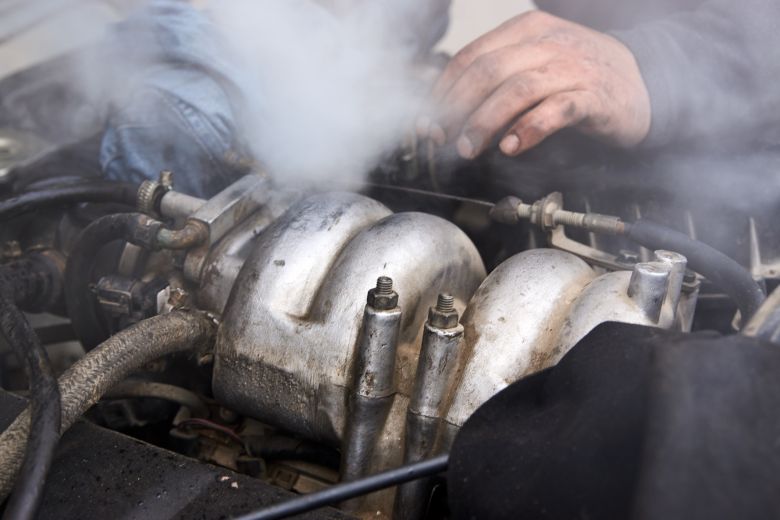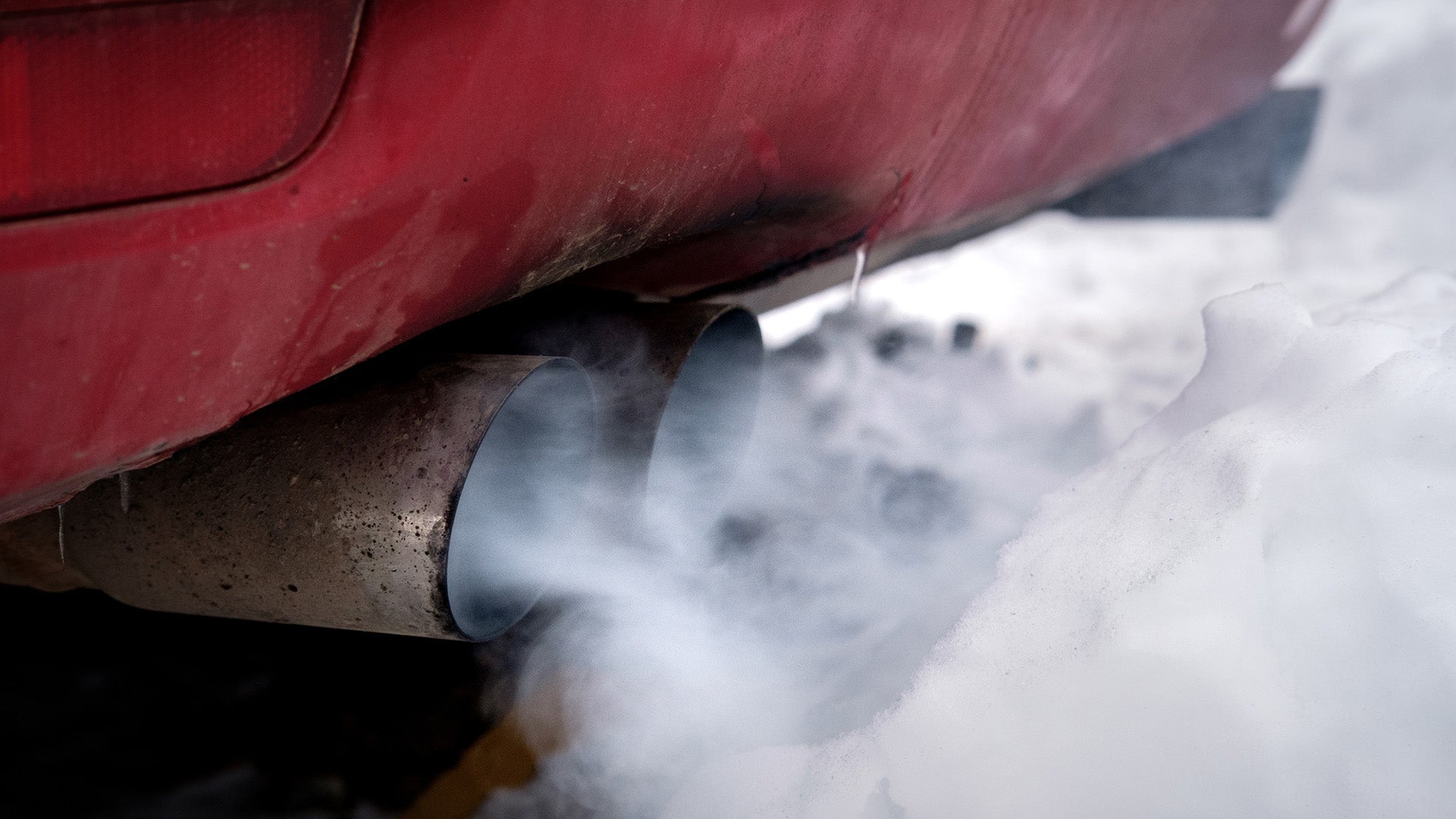How Long Can You Drive With a Bad Heater Core
Driving with a bad heater core is risky, and should only be done for short distances. Prolonged use can cause further car damage and safety issues.
A bad heater core is an urgent fix for any vehicle owner, as it’s an integral part of your car’s cooling system and cabin warmth. Operating a vehicle under these conditions can lead to overheating, which might ultimately cause significant engine damage.
The heater core acts as a heat exchanger, providing warmth to the cabin by transferring engine heat to the air that blows through your vents. Ignoring the issue can also result in a foggy windshield, complicating driving visibility. Quick and short trips might be manageable, but for the health of your vehicle and safety on the road, addressing a faulty heater core should be a top priority. Safe driving demands clear visibility and an optimally functioning engine – both compromised by a malfunctioning heater core.
Recognizing A Bad Heater Core
Driving with a faulty heater core can be tricky. Heater cores are crucial for both defrosting your windshields and staying warm. Know the signs to avoid being stuck in the cold.
Symptoms Of A Faulty Heater Core
Is your car’s interior cold, or is the window fogging up? These might be heater core red flags.
- Fog inside your car: A misty windshield when your heater is on could mean a leak.
- Car smells sweet: A coolant leak inside your vehicle releases a distinctive odor.
- Cold air: If your heater blows cold air, the core could be blocked.
- Coolant loss: Mysterious drops in coolant levels might point to core issues.
- Overheating engine: Without enough coolant, your engine could overheat.
Diagnosing Heater Core Problems
Spotting heater core troubles is the first step. Next is figuring out the root cause.
Pressure test: Mechanics use this to check for leaks in the system.
Inspection: A thorough check can reveal blockage or damage.
Remember, a professional mechanic is your best bet to diagnose heater core issues properly.
Implications Of Driving With A Malfunctioning Heater Core
The heater core is a crucial component of a vehicle’s cooling system. It helps manage engine temperature and keeps the cabin warm. A malfunctioning heater core poses significant risks.
Overheating Risks
A bad heater core can lead to an overheating engine. This happens because the core is part of the cooling system. When it fails, it can’t regulate the engine’s heat properly. An overheating engine is serious. It can cause head gasket failures, warped engine components, or even complete engine failure. Noticing signs like steam from the hood or a high temperature gauge demands immediate attention. It’s best to address these problems to avoid costly repairs.
Compromised Cabin Comfort
Faulty heater cores affect cabin temperature. In winter, it may be impossible to stay warm inside the vehicle. Frost on the inside of the windshield becomes a problem. This can obstruct your view, which is dangerous. Your comfort is important, but safety comes first. Driving without proper visibility is not only uncomfortable but also risky.
- An overheating engine should never be ignored.
- Address heater core issues quickly to prevent more damage.
- Driving with a foggy windshield increases accident risks.
- Proper engine and cabin temperatures ensure safety and comfort.
Short-term Solutions And Quick Fixes
Driving with a bad heater core is risky. Yet, you might need a short-term fix. Let’s talk about what you can do now to keep driving temporarily.
Temporary Repairs
Some quick repairs can buy you time before a full fix.
- Sealant additives: These go into the coolant system. They temporarily block leaks in your heater core.
- Checking hoses: Make sure all connections are tight. A simple hose clamp adjustment might slow down the leak.
- Epoxy fixes: For small cracks, use epoxy. But remember, this won’t last long.
Bypassing The Heater Core
This is a last resort before professional repair. Bypassing means rerouting coolant so it won’t go through the heater core.
- Locate: Find the two heater hoses going to the core. They are usually on the firewall.
- Disconnect: Remove both hoses from the core carefully.
- Connect: Use a tube or a hose to connect the two open ends together.
- Secure: Make sure the connection is tight and leak-free.
This fix means no heat inside your car. But it lets you drive until you get a full repair.

Credit: m.youtube.com
Understanding The Risks Of Procrastination
Ignoring a bad heater core can lead to bigger car troubles. Let’s explore the dangers of waiting too long to fix a heater core in your car.
Damage To Other Car Components
A faulty heater core doesn’t just affect cabin warmth. Coolant leaking into your car damages parts. This damage can range from a soggy carpet to ruined electronics. Bold leaks corrode crucial components like the engine or electrical system. Prolonged exposure worsens these issues.
- Electrical failures: Coolant conducts electricity, risking short-circuits.
- Engine damage: Low coolant levels from leaks can overheat the engine.
- Foul odors: Coolant smells bad and is tough to clean.
Increased Repair Costs Over Time
As problems get worse, repair costs rise. A small heater core issue can become a major expense. Immediate fixes keep costs down. Below, see how delaying repairs can hit your wallet.
| Time Delayed | Potential Issues | Cost Impact |
|---|---|---|
| 1 Month | Increased coolant usage, minor components affected | Low-Medium |
| 3 Months | Significant electrical risks, more components damaged | Medium-High |
| 6+ Months | Major engine damage, serious electrical failures | Very High |
Procrastinating the repair of your car’s heater core only spells trouble. Act fast to protect your vehicle and wallet. Ensure a smooth and warm drive by addressing heater core problems immediately.
When To Call It Quits: Knowing The Limits
Understanding when to stop driving with a bad heater core is crucial for car owners. The heater core affects not just comfort, but also the functionality of a vehicle’s heating system.
Assessing The Severity Of The Issue
The first step to deciding whether you can keep driving is to assess the damage. Look for signs such as:
- Coolant leaking inside the vehicle
- A misty windshield due to coolant vapor
- Overheating engine from low coolant levels
If the issue seems minor and there’s no sign of overheating, it may be safe to drive for a short time. In contrast, significant leaks or engine issues mean it’s time to act.
Making The Decision To Repair Or Replace
After identifying the extent of the problem, choose to repair or replace the heater core. Consider the following:
| Option | Consideration |
|---|---|
| Repair | May be cheaper but could mean more trouble soon. |
| Replace | More costly but a long-term solution. |
Factor in age and value of the vehicle when making your choice. If repairing costs approach the value of the car, replacement might make more sense.
It’s clear that driving with a compromised heater core comes with limits. Immediate attention is essential to avoid further damage to your vehicle. Assess carefully and make a smart decision regarding repair or replacement for a safe and comfortable drive.

Credit: www.carparts.com
Preventative Measures And Maintenance Tips
Driving with a bad heater core is a gamble you don’t want to take. Preventative measures and maintenance tips ensure your car stays warm and your windows clear during cold spells. Avoid breakdowns and costly repairs with these straightforward steps.
Regular Cooling System Maintenance
Your car’s cooling system is the key to a healthy heater core. Neglecting regular checks can lead to bigger issues. Follow these simple tips to keep your system in top shape:
- Check coolant levels monthly and top off as needed.
- Inspect for leaks or damage to hoses and the radiator.
- Flush the coolant system every 30,000 miles or as directed by your auto manufacturer.
- Replace coolant with a proper mix of antifreeze and distilled water.
A well-kept cooling system promotes heat circulation and prolongs your heater core’s life.
Catching Problems Early
Quick action avoids major heater core damage. Stay alert for early signs like a sweet smell indicating coolant leaks, or fog inside your windows. Use this handy checklist to spot trouble:
| Sign | Action |
|---|---|
| Coolant loss with no visible leak | Get a pressure test. |
| Frequent overheating | Check the thermostat. |
| Coolant on passenger floor | Inspect the heater core. |
| Lack of heat | Consider a flush. |
Acting fast on these signs minimizes damage and maintains your heater core’s integrity.
Frequently Asked Questions Of How Long Can You Drive With A Bad Heater Core
What Is A Heater Core’s Lifespan?
A heater core typically lasts between 8 to 10 years. Regular maintenance can extend its life. Factors like corrosion, frequent use, and the quality of coolant influence its longevity.
Can A Bad Heater Core Cause Car Troubles?
Yes, a malfunctioning heater core can lead to car trouble. It can cause overheating, fogging inside the car, and a sweet smell. These problems could potentially damage the engine if left unaddressed.
What Are Symptoms Of A Failing Heater Core?
Signs of a failing heater core include insufficient heating, coolant leaks, foggy windows, and a sweet smell in the cabin. It’s important to address these issues promptly to avoid further damage.
How Quickly Should You Replace A Bad Heater Core?
Replace a bad heater core as soon as possible. Delaying replacement can cause added engine strain and potentially dangerous driving conditions due to fogged up windows or overheating.
Conclusion
Driving with a bad heater core is a temporary situation. Prioritize your safety and vehicle health to avoid costly damage. Seek professional maintenance soon to ensure a warm, functioning cabin. Remember, the longer you wait, the higher the risk. Get it fixed and enjoy comfortable, worry-free drives.






